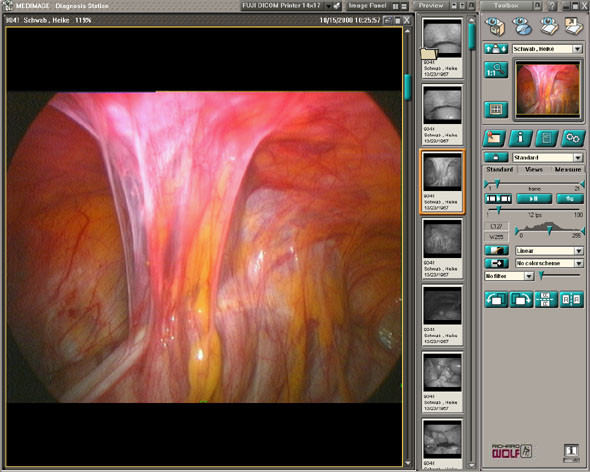Endoscopic surgery is one of the most advanced methods of treatment in the medical field and provides physicians with an unparalleled degree of visual information when treating skull base disorders.
Endoscopy as a diagnostic tool was first envisioned by Philipp Bozzini, a German physician, in 1806. Bozzini created a rudimentary Lichtleiter device designed to introduce light into areas that otherwise could not be visually examined by physicians; however, opposition from the Vienna Medical Society prevented its testing on human subjects. As a result, army physician William Beaumont was first to use an endoscopic device on a human subject in 1822.

The first endoscopic tools were simply lights to aid in visual examination. Later, advances allowed the combination of miniature lights and cameras and the development of specialized surgical tools to provide even more utility for physicians and surgeons in treating tumors in hard-to-reach areas, especially within the brain.
The Tools for Endoscopic Techniques
These can be used in both the diagnosis and the treatment of disease. One of the most common diagnostic procedures is the colonoscopy. This procedure is used to examine the interior of the colon and can identify tumors, polyps and obstructions within the large intestines. The instruments used for colonoscopy and sigmoidoscopy are relatively large and usually include a lighted camera mounted on a flexible tube that is guided directly through the colon.
In contrast, the endoscopic tools used for skull base diagnosis and surgery are extremely small and delicate; these miniaturized tools incorporate the following:
- A light
- A high-definition camera
- A fiber-optic connection or transmitter to an exterior video terminal to allow real-time display of the images from inside the brain
This allows for a higher degree of accuracy when excising tumors and treating other disorders.
The Advancements in Endoscopy
Endoscopic surgical and diagnostic methods continue to evolve. Research institutions and surgical centers are constantly striving to provide even more advanced and effective services to their patients with ongoing research into new treatment methods. The Skull Base Institute of Los Angeles has been at the forefront of this research, collaborating with NASA to create advanced miniaturized diagnostic and surgical tools on behalf of its patients. More information on this project is available online at websites, such as http://www.skullbaseinstitute.com/.
Endoscopy has progressed significantly since its earliest days. Today, it is used in numerous diagnostic and surgical procedures to provide patients with the most accurate information on their medical condition and to ensure that physicians have the tools they need to treat those conditions effectively.
Becky loves to write. Her favorite subject to write about is health. If you’d like more information regarding http://www.skullbaseinstitute.com/, please visit http://www.skullbaseinstitute.com/


Endoscopy is a very well established diagnostic process that is also very effective and safe. It offers a wide variety of career opportunities. Its equipment market is very well established both new and used.